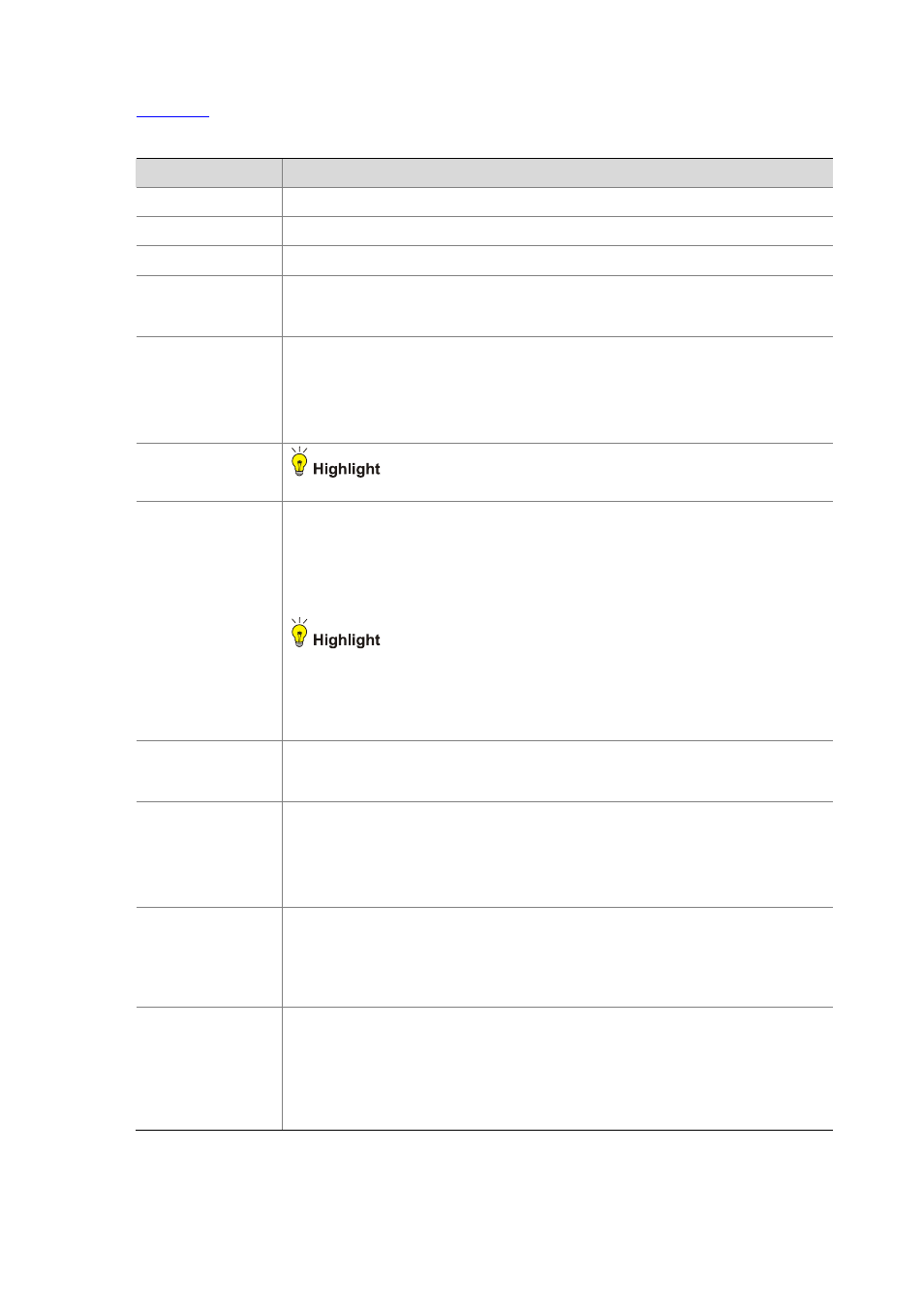H3C Technologies H3C WX6000 Series Access Controllers User Manual
Page 360

34-5
shows the configuration items of radio setup.
Table 34-1 Configuration items of radio setup
Item
Description
AP Name
Displays the selected AP.
Radio Unit
Displays the selected AP’s radios
Radio Mode
Displays the selected AP’s radio mode.
Transmit Power
Maximum radio transmission power, which varies with country codes, channels, AP
models, radio modes and antenna types. If you adopt the 802.11n mode, the maximum
transmit power of the radio also depends on the bandwidth mode.
Channel
Working channel of the radio, which varies with radio types and country codes. The
working channel list varies with device models.
auto: The working channel is selected by the driver in system initialization.
If you modify the working channel configuration, the transmit power will be automatically
adjusted.
802.11n
The option is available only when the AP supports 802.11n.
bandwidth mode
802.11n can bond two adjacent 20-MHz channels together to form a 40-MHz channel.
During data forwarding, the two 20-MHz channels can work separately with one acting
as the primary channel and the other acting as the secondary channel or work together
as a 40-MHz channel. This provides a simple way of doubling the data rate.
By default, the channel bandwidth of the 802.11n radio (5 GHz) is 40 MHz, and that of
the 802.11n radio (2.4GHz) is 20 MHz.
If the channel bandwidth of the radio is set to 40 MHz, a 40 MHz channel is used as
the working channel. If no 40 MHz channel is available, a 20 MHz channel is used.
For the specifications, see IEEE P802.11n D2.00.
If you modify the bandwidth mode configuration, the transmit power will be
automatically adjusted.
client dot11n-only
If you select the client dot11n-only check box, non-802.11n clients are prohibited from
access. If you want to provide access for all 802.11a/b/g clients, you need to disable this
function.
A-MSDU
Selecting the check box before A-MSDU enables A-MSDU.
Multiple MAC Service Data Units (MSDU) can be aggregated into a single A-MSDU.
This reduces the MAC header overhead and thus improves MAC layer forwarding
efficiency.
At present, only A-MSDUs can be received.
A-MPDU
Selecting the check box before A-MPDU enables A-MPDU.
802.11n introduces the A-MPDU frame format. By using only one PHY header, each
A-MPDU can accommodate multiple Message Protocol Data Units (MPDUs) which
have their PHY headers removed. This reduces the overhead in transmission and the
number of ACK frames to be used, and thus improves network throughput.
short GI
Selecting the check box before short GI enables short GI.
Delays may occur during receiving radio signals due to factors like multi-path reception.
Therefore, a subsequently sent frame may interfere with a previously sent frame. The
GI function is used to avoid such interference. It increases the throughput by 10 percent.
The short GI function is independent of bandwidth and thus supports both 20MHz and
40MHz bandwidths.
